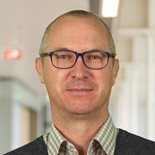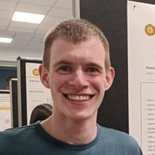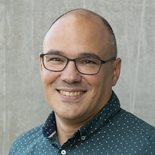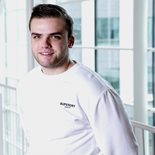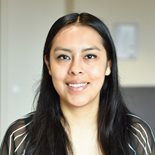Key objectives
- To investigate the mechanisms by which complement attacks retinal cells and contributes to age-related macular degeneration (AMD), and to develop nanobody-based assays to counteract this attack
- To modulate photoreceptor proteostasis to inhibit retinal degeneration
- To stimulate retinal regeneration to counteract retinal degeneration
Our concept Pathway-based therapy
In this Pillar, our ambition is to generate a pipeline of interventions aimed at resetting protein homeostasis in the retina to steer it away from cell death that causes blindness.
learn moreOur concept Pathway-based therapy
Most current drugs used to treat disease are small molecules that act as specific therapeutic agonists or antagonists by competitively binding to target proteins. Importantly, such druggable target proteins are commonly part of, or surrounded by, a module of physically or functionally interacting proteins that define a distinct part of its functional biochemical pathway, thereby representing only a subset of possible interventions. Moreover, the gene encoding the target protein is embedded in a gene expression network consisting of co-regulated transcripts, functional RNAs and proteins. Raising or lowering the activity of some of these components adds another layer of possibilities for pathway-based and gene-based (Pillar 1) interventions. While gene-based therapies can effectively be designed for genes that affect a significant fraction of patients, more general approaches targeting disease pathways may be more effective for the many AMD and Inherited Retinal Disease (IRD) genes that affect only a small number of individuals.
In this Pillar, it is our ambition to generate a pipeline of interventions that restore protein homeostasis in the retina, preventing cell death and ultimately preserving vision. This cell-saving approach may be applied as a stand-alone intervention, or in combination with gene augmentation therapy or other interventions.
Our approach
The research proposed for Pillar 2 will be performed in 3 work packages.
Work package 2.1: Developing targets in complement system for AMD
Work package 2.2: Proteostasis network of photoreceptors
Work Package 2.3: Retinal regeneration pathways in IRDs
Our innovation
We will develop innovative therapies for AMD and IRD by targeting complement factors, rebalancing the proteostasis network (PN), and inducing retinal regeneration.
learn moreOur innovation
A new therapeutic approach for AMD will be developed by generating and characterizing nanobodies that can bind and inhibit complement factors.Both the concept of targeting complement factors in AMD, and the use of nanobodies to target these proteins, generate an innovative therapeutic approach with high potential for treating AMD.
Our approach to pharmacologically rebalance the PN represents a completely new and non-intuitive pipeline towards treating IRD. It holds great promise for the treatment, delay of onset, or delay of progression of many different types of IRD, and would be well-suited as combination therapy with the approaches in Pillar 2 and 3. Therapeutic approaches for retinal degeneration may immediately provide options to treat a wider group of developmental and progressive diseases.
Additionally, to gain more insight into the mechanisms of action of complement factors at the RPE-CC interface, we will use in vitro platform A models. iPSC-derived cells from patient cohorts, selected based on complement system genetic variants, will be cultured in an RPE-CC co-culture model to identify defects in one or both cell types, with or without complement exposure. If defects are found, a multi-omics approach (RNA sequencing and proteomics) will be used to discover new targets. Furthermore, these patient-derived iPSC models will be used for initial testing of the newly designed nanobodies.
Finally, cellular reprogramming has also been observed during heart and appendage regeneration, suggesting that this may be a more common mechanism in tissues that lack a stem cell compartment. This property in teleost fish offers a unique opportunity to dissect the molecular pathways underlying retinal regeneration and assess the therapeutic potential of modulating retinal regeneration pathways.
WP leaders
Team

Bert Janssen
Professor Molecular mechanisms of intercellular signalling Utrecht University
read moreBert Janssen
About me
As a structural cell biologist at Utrecht University, I zoom in into the inner workings of our cells. We visualize how cells interact and communicate and show what goes wrong in disease.
Your contribution to Lifelong VISION
My group aims to find new ways to treat the eye disease age-related macular degeneration (AMD) and develop new tools to find out the cause of this disease. Lifelong VISION provides an excellent environment with broad expertise to translate our fundamental science to applied research.
Bert van den Heuvel
About me
Bert van den Heuvel is professor and head of the laboratory research group from the department of Pediatric Nephrology both at the Radboudumc and Catholic University Leuven, Belgium. His main research interests are tubular transport defects, extracellular matrix and renal pathology, nephrogenesis and hyperfiltration, the pathogenesis of the hemolytic uremic syndrome, complement-mediated disorders, cystinosis and mitochondrial (renal) disorders. The expertise of his group consists of collection of urine and/or tissue specimens from patients and controls, molecular genetic analysis, differential gene expression analysis, proteomics analyses, immunodissection, establishment of primary cell cultures (from body fluids and tissues), (conditional) immortalization of cell lines, immunohistology studies by laser scanning microscopy (CLSM) and structural and/or functional characterization of cultured cells plus tissues.
Your contribution to Lifelong VISION
Bert van de Heuvel has extensive expertise in the analysis of complement (activation) proteins, and he has already worked together in close collaboration with the Ophthalmology group in Radboudumc to study the involvement of the complement system in the progression of AMD. He will be involved in Pillar 2.
Damian Kevelam
About me
I am a PhD candidate at Utrecht University, supervised by Dr Bert Janssen. My interests are in structural biology and protein chemistry, especially in understanding how a protein’s structure and chemical properties influence its molecular interactions.
Contribution to Lifelong VISION
As part of Pillar 2, my project focuses on the role of the complement system in age-related macular degeneration. I aim to develop and characterize targeted inhibitors, such as nanobodies and computationally designed binder proteins, to modulate complement activity in the retina.
Erwin van Wijk
About me
I started working at Radboudumc in 2001. My field of study is to (a) better understand and (b) develop effective genetic therapies for otogenetic disorders and Usher syndrome.
Contribution to Lifelong VISION
I contribute to Pillar 1 and Pillar 2 by bringing expertise in proteomics techniques in order to unravel pathogenic mechanisms underlying IRDs, generating and characterizing zebrafish IRD models for basic scientific and translational purposes, and ample experience in developing splicing modulating treatments using antisense oligonucleotides (RNA) or CRISPR/Cas9 (DNA) for the future treatment of IRDs.
Ingeborg Klaassen
About me
I joined the department of Ophthalmology, Ocular Angiogenesis Group as a postdoc in 2002 and now lead the group as PI, focusing on retinal vascular diseases like diabetic retinopathy and AMD.
Your contribution to Lifelong VISION
I firmly believe that our collaborative efforts on this project will accelerate our understanding of the mechanisms behind blinding eye diseases and lead to new treatments. I will contribute my expertise in basic retinal research in Pillar 2 and the development of in vitro models in Platform A of lifelong VISION.
Magda Smoor
About me
I am an Assistant Professor in the Eye Epidemiology group at Erasmus MC, specializing in genetic and biomolecular research on age-related macular degeneration (AMD). In addition to my research, I manage large national, international, and personal grants.
Your contribution to Lifelong VISION
Within Lifelong VISION, I serve as the link to the RD5000 consortium, for which I manage the national registry and research database. Furthermore, I contribute expertise in AMD, particularly in genetics, complement biology, and lipid metabolism.
Additionally, as a member of the Project Support Office, I co-manage Lifelong VISION, ensuring the project's strategic and operational success.
Minh Nguyen
About me
I am a biomedical scientist with a PhD in systems biology, specializing in ciliopathies, and have transitioned into data science to apply computational approaches to biomedical research. My experience spans academia and industry, combining wet lab expertise with bioinformatics and machine learning for data-driven insights.
Your contribution to Lifelong VISION
I bring expertise in multi-omics data analysis, including RNAseq and proteomics, to uncover molecular mechanisms underlying genetic retinal diseases. My experience in developing scripts for large-scale cilia phenotyping and analyzing proteomics data enables me to optimize cilia phenotyping in a diagnostic setting and build a robust in-house protein interaction database. With a strong background in both bioinformatics and wet lab molecular biology, I bridge experimental and computational approaches to advance research in genetic retinal diseases.
Niels van Dillen
About me
I am a highly motivated PhD student with a keen interest in immunology, specifically the complement system. My passion for this field began during my graduation, where I investigated the role of the complement system within the context of kidney diseases. Following my graduation, I worked as a research technician, focusing on unravelling the complex involvement of the complement system in Age-related Macular Degeneration (AMD). With this diverse background, I am excited to continue my research as a PhD student and contribute to advancing our understanding of the complement system’s role in eye diseases.
Your contribution to Lifelong VISION
My PhD project falls under Pillar 2 and focuses on pathway-based therapies, with an emphasis on the complement system. Supervised by Prof. Dr. Bert van den Heuvel and Prof. Dr. Caroline Klaver, our research aims to decipher the complement profiles of AMD patients. We will investigate the mechanisms of action of complement factors using morphological and functional readouts in iPSC-derived cells from AMD patients with specific genetic variants. Additionally, we will test newly developed complement-targeting nanobodies in these patient-derived models.
Paola Serrano Martinez
About me
I joined the Ocular Angiogenesis Group of the Department of Ophthalmology in 2021. My postdoctoral research focuses on the study of vascular dysfunction in ocular diseases, such as age-related macular degeneration.
Contribution to Lifelong VISION
My expertise in complex in vitro vascular models, such as stem cell-derived vascular organoids, would contribute to the joint effort of Lifelong VISION for building up a model of the back of the eye to screen targeted therapies in Platform A.
Rens Hoekstra
About me
I am a PhD student at the Radboudumc and I am an enthusiastic researcher with a strong interest in molecular biology and the genetic mechanisms driving disease. My aspiration is to use this knowledge to develop innovative therapies for diseases that are currently considered incurable. During my study in Biomedical Sciences, I acquired a solid foundation in molecular genetics and the molecular mechanisms of disease. In addition, I gained valuable experience using zebrafish as a model organism to explore and develop genetic therapies for inherited retinal diseases.
Your contribution to Lifelong VISION
My PhD project in Pillar 2 will primarily focus on the ability of zebrafish to regenerate their damaged retina. This project will be supervised by Dr. Erwin van Wijk and Prof. dr. ir. Ronald Roepman, and our goal will be to identify potential molecular targets for retinal regeneration therapy in humans.
Yara Lechanteur
About me
I have been working on AMD related research for over 10 years. My current expertise is in diagnostics of the complement system and early-onset age-related macular degeneration.
Your contribution to Lifelong VISION
I am the principal investigator of a large case-control database (>2000 AMD patients and healthy controls) with extensive phenotypic and genetic data. Our work on complement diagnostics at Radboudumc will provide leads for therapy development within the consortium.


